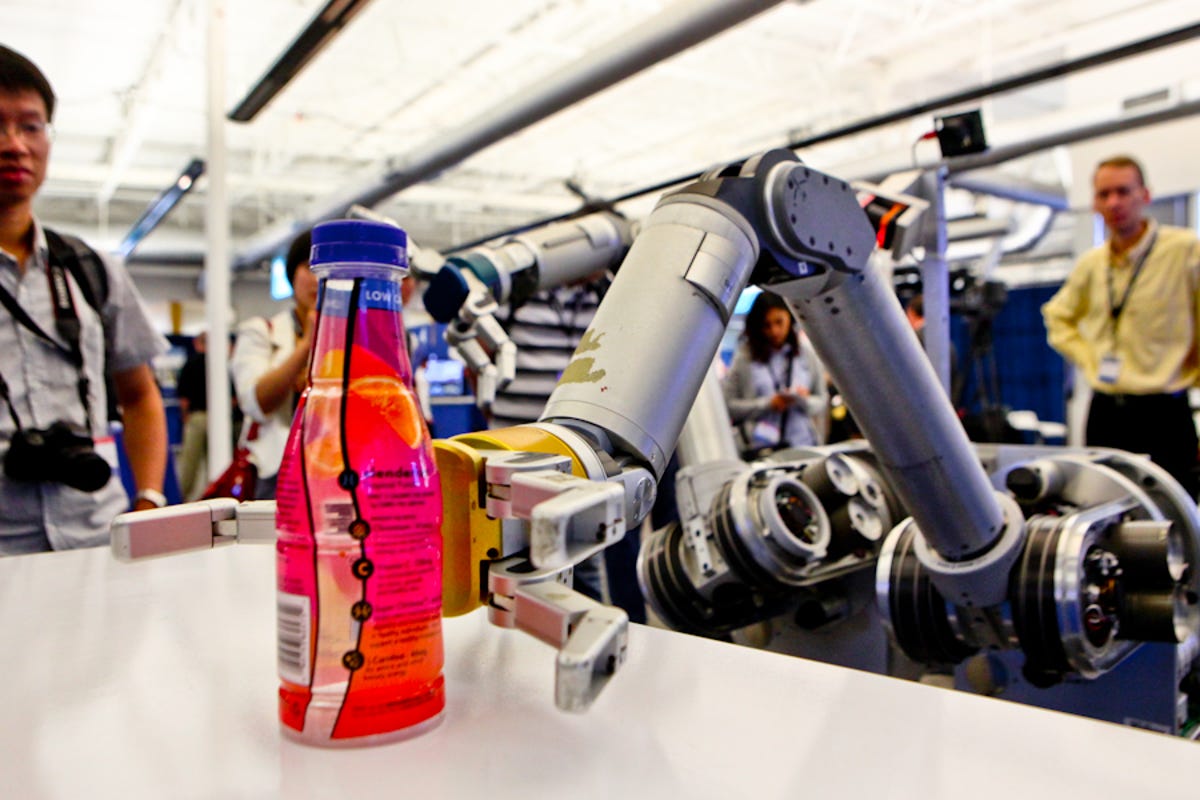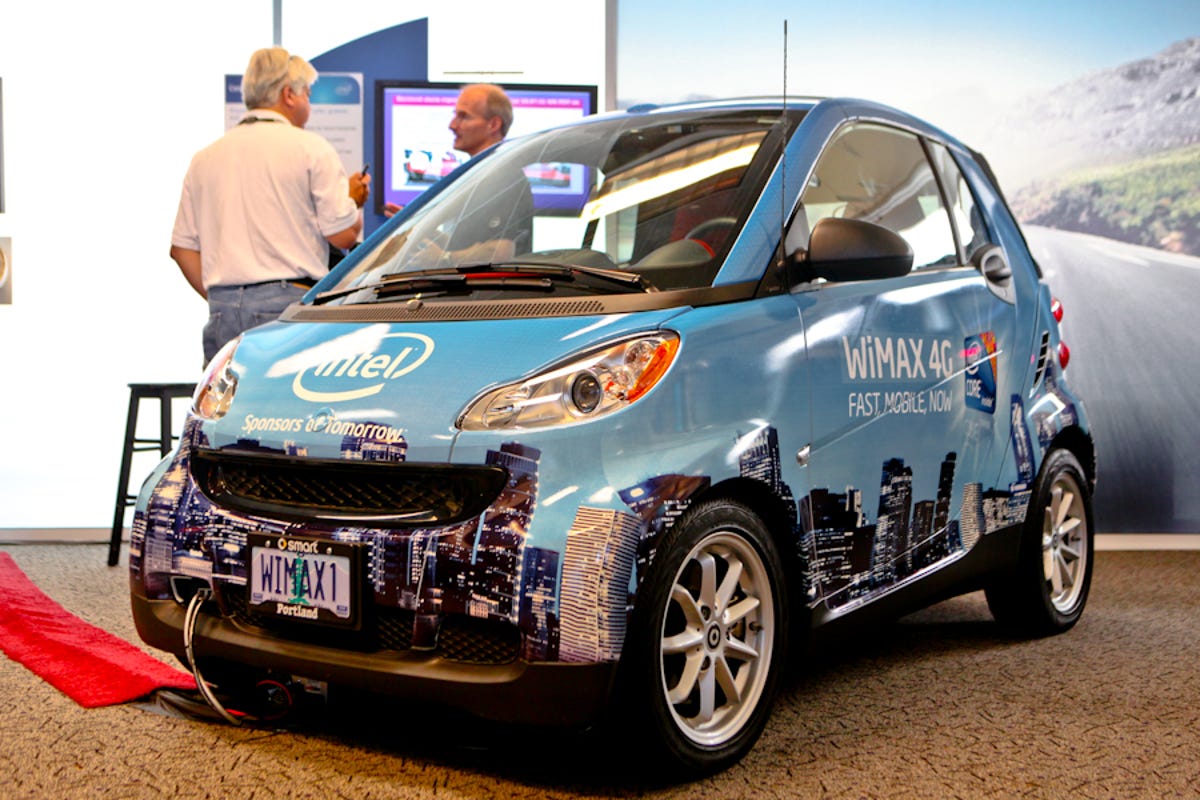Intel Research Day (photos)
Intel's annual science fair at the Computer History Museum shows off its research into future technologies with location-based data, smart cars, and of course, robots.

HERB the robot
The robot knows how to do things like pick up bottles and put them in the recycle bin or hand items to people, but not because it's been taught all of these tasks. Rather HERB is a learning, autonomous robot.
The robot "sees" the 3D models of objects based on the laser on its front it uses to scan for things. It finds objects--like humans, bottles, recycle bins, and more--and executes tasks based on what the computer inside knows about those items.
Project Oasis
The depth camera can pick up the steak on a regular kitchen counter, subtract the background, and make information appear on the counter with "buttons." When it sees the steak, a button will be projected on the counter. Tapping the virtual button brings up menu options like recipes, shopping lists and more.
The idea is to create a "smart" space that doesn't require a lab or a setup of many sensors and can be translated to real-world situations, like cooking.
Oasis up close
Project Portico
Small cameras attached to a tablet PC can pick up not only what a person is doing on the touch-sensitive screen of the tablet, but what he or she is doing near the tablet. The cameras are basically enlarging the surface area of the tablet.
The result is that "if your device is aware of the things around you, it could teach you how to julienne carrots or how to change your carburetor," said Anthony LaMarca, a principle engineer on the project.
Holodeck Car
The researchers in Australia project the image of the car onto a cardboard life-size model and stick it in a windtunnel, where they can streamline the car and move side mirrors and headlights around to find optimal fuel efficiency for the car, said Pat McCulley, systems analyst at Intel. The aim is to cut costs and eliminate waste from building real-world models.
Persistent audio interfaces
Intel Research Day

Smart cars
Having this infrastructure in place would also mean you could turn your car on remotely and set the temperature before you even leave your house or office.
The technology assumes your car is connected to a 3G or 4G network, which would require the same kind of subscription wireless service you use in your cell phone or laptop.
Intel demonstrated a similar idea last year at Intel Research Day, but with an emphasis on streaming entertainment content like music and photos to cars. This year the researchers emphasized vehicle safety and convenience.
Visible light positioning
Car headlights, using light like the red LED light shown at left, can determine in inches, how far away another car is behind them or in front of them and project this information into a driver's display.
"It means you can see cars in your blindspot," said Vu Nguyen, Intel technology evangelist.
Right now few cars have LED (light-emitting diode) headlights, but more will come, he said. Incandescent bulb headlights won't work because their light can't be modulated over different frequencies the way LED's can.
Computer Vision & Augmented Education
SENS
The Meeting Diarist
The technology allows researchers to record a meeting and then search the recording afterward for any word or by who was speaking at the time. Faster multicore CPUs enable the computing power to do this quickly and efficiently, Intel says.

